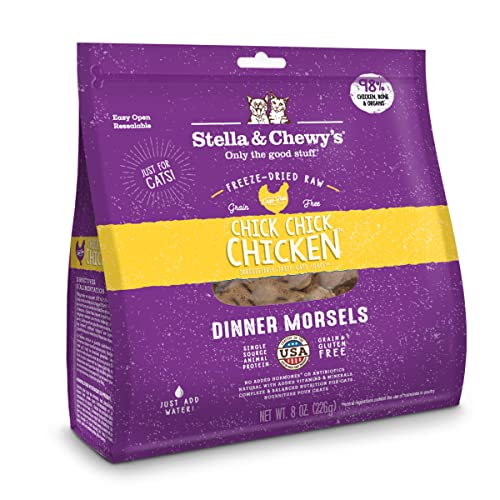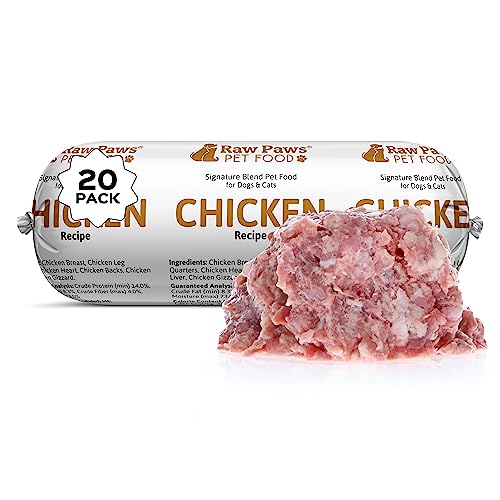The telltale thump followed by a crash is a sound familiar to many cat owners. Maybe it's a precariously perched vase, now in pieces, or a frantic scramble as your feline friend flees the scene of a toppled lamp. While these moments can be humorous (in retrospect), they're also a stark reminder of the importance of cat-proofing. It’s easy to think, "Oh, I'll just put away the breakables," but true cat-proofing goes far beyond that. It's about safeguarding your cat's well-being, preventing accidents, and creating a home environment where both you and your furry companion can thrive. Cats, driven by their natural instincts, explore the world through climbing, scratching, chewing, and, let's face it, a healthy dose of curiosity that often leads them into trouble. This article will serve as your comprehensive guide, offering a detailed look at essential cat-proofing supplies, organized by specific hazards, to ensure your home is a haven of safety and happiness for everyone.
Before diving into specific supplies, it's crucial to understand why cats do what they do. This isn't about stifling their natural behaviors; it's about redirecting them in safe and constructive ways. Cats have an innate need to sharpen their claws, which is essential for maintaining their health and marking their territory. They're also driven by a powerful hunting instinct, even if their "prey" is a dangling curtain cord or a tempting electrical wire. Boredom can exacerbate these behaviors, leading to increased scratching, chewing, and general mischief.
Keep in mind that the age and breed of your cat can also influence their cat-proofing needs. Kittens, with their boundless energy and insatiable curiosity, require a much more rigorous approach than a senior cat who prefers napping in sunbeams. Certain breeds, like Bengals or Siamese, are known for their high activity levels and may require more vertical space and stimulating toys to keep them entertained and out of trouble. In addition, all cats have their own personality. Some may be more curious or playful than others.
The living room, often the heart of the home, presents a unique set of challenges for cat owners. It's typically filled with potential hazards, from enticing electrical cords to delicate décor. Electrical cords and wires are a major concern. Cats, especially kittens, are drawn to chewing on these, which can lead to severe burns, electrocution, or even death. The solution is multi-pronged. First, invest in cord protectors and concealers. These come in various forms: split loom tubing, which encases cords in a flexible, protective layer; cable sleeves, often made of neoprene, which bundle multiple cords together; and cord organizers, which can be mounted to walls or furniture to keep cords neatly tucked away. There are also rigid cord covers that provide extra protection against persistent chewers.
Beyond physical barriers, consider using deterrent sprays. Bitter apple spray, and similar products, have a taste that cats find incredibly unpleasant. Applying these sprays to cords can discourage chewing. Finally, use strategic furniture placement to your advantage. Hide cords behind sofas, entertainment centers, and other large pieces of furniture whenever possible. A simple DIY fix for cords, is to wrap them in aluminum foil, the texture and taste are unappealing to most cats.
Window treatments, like blinds and curtains, can also pose a significant risk. Dangling cords are an irresistible invitation for play, but they can quickly become a strangulation hazard. The safest option is to opt for cordless blinds or shades. These eliminate the danger entirely. If you have existing corded blinds, install cord cleats or wind-ups. These simple devices keep cords securely fastened to the wall, out of your cat's reach. For curtains, ensure that curtain rods are securely mounted and strong enough to withstand a cat attempting to climb them. Consider vertical blinds, as they are often less tempting for climbing than horizontal blinds.
Protecting your furniture from scratching is another key aspect of cat-proofing the living room. Cats scratch to sharpen their claws, mark their territory, and stretch their muscles. Providing appropriate scratching outlets is essential. Invest in a variety of scratching posts and pads. Sisal is a popular and durable material, but some cats prefer cardboard or carpet. Experiment with different shapes and sizes – vertical posts, horizontal pads, angled scratchers – to find what your cat enjoys most. Placement is crucial. Put scratching posts near areas where your cat already tends to scratch, such as the corners of sofas or near windows. Use positive reinforcement, like catnip or treats, to encourage your cat to use the scratching posts instead of your furniture.
For added protection, consider furniture covers or protectors. Slipcovers, throws, and dedicated pet covers can shield your upholstery from claws and fur. Double-sided tape, or products like Sticky Paws, can be applied to specific areas of furniture to deter scratching. The sticky texture is unpleasant for cats, but it won't damage your furniture. A DIY alternative to scratching posts and pads can be a simple cardboard box. Many cats love the texture.
Houseplants add beauty and life to a living room, but many common varieties are toxic to cats. It's crucial to do your research and ensure that any plants you bring into your home are safe. The ASPCA website provides a comprehensive list of toxic and non-toxic plants for cats. Some cat-safe alternatives include spider plants, Boston ferns, and cat grass (which cats often enjoy nibbling on). If you have plants that are potentially toxic, keep them completely out of reach. Hanging baskets or high shelves are good options. You can also use protective barriers, like plant cages or netting, to prevent access.
Breakables and knick-knacks add personality to a living room, but they can also be a source of danger (and heartbreak) if knocked over by a curious cat. Museum putty, also known as quake hold, is a fantastic solution. This reusable adhesive putty can be used to securely anchor items to shelves, preventing them from being toppled. For valuable or particularly delicate items, consider displaying them in enclosed cases or cabinets. Strategic placement is also key. Avoid placing breakables near the edges of shelves or in high-traffic areas where they're more likely to be bumped.
The kitchen, with its enticing smells and potential hazards, requires careful cat-proofing. The stovetop and oven present a significant burn risk. Cats are naturally curious and may jump onto counters to investigate, potentially landing on a hot burner. When the stovetop is not in use, use stovetop covers. These create a barrier between your cat and the hot surface. Knob covers can prevent your cat from accidentally turning on burners, a surprisingly common occurrence. The most important rule is to never leave a hot stovetop unattended when your cat is around.
Countertops, in general, should be kept clear of anything that could be harmful to your cat. This includes food, cleaning supplies, and sharp objects. Cleanliness is essential. Wipe down counters immediately after use to remove any food residue that might attract your cat. Secure storage is also key. Keep food and cleaning products in closed cabinets or drawers.
Trash cans in the kitchen are a treasure trove of potentially dangerous items for cats. They may contain food scraps that are toxic, choking hazards, or sharp objects. Invest in a cat-proof trash can with a secure lid. Pedal-operated cans or those with locking mechanisms are good options. If possible, keep your trash can inside a cabinet to further limit access.
Cleaning supplies, often stored in the kitchen, are highly toxic to cats. Childproof latches or locks on cabinets containing cleaning products are a must. Alternatively, store these products on high shelves that are completely out of reach. Consider switching to natural cleaning alternatives, like vinegar and baking soda, which are less toxic than many commercial cleaners. However, even these should be kept securely stored.
Dishwashers also need to be kept in mind, cats can climb into an open dishwasher and become trapped, they may also ingest harmful dishwasher soap residue. Make a habit of keeping the door closed when it is not in use. Always check inside before starting a cycle.
The bathroom, like the kitchen, contains a number of potential hazards. The toilet, surprisingly, can be a drowning risk, especially for kittens. The simplest solution is to keep the toilet lid down at all times. This becomes a habit with practice. If you're particularly forgetful, consider installing an automatic toilet seat closer.
Medications and toiletries, typically stored in the bathroom, are highly poisonous to cats. Keep all medications, both prescription and over-the-counter, in medicine cabinets or drawers with secure latches. Childproof containers for medications provide an extra layer of safety.
Shower curtains and bathmats can also be targets for scratching and chewing. Choose durable materials that are less likely to be shredded. If they do become damaged, replace them promptly to prevent your cat from ingesting loose threads or pieces of fabric. The bathtub, when filled with water, presents a drowning risk. Empty the bathtub immediately after use, do not leave water unattended.
The bedroom, while generally a calmer space, still requires some cat-proofing. Closets and drawers, if left open, can be enticing hiding places for cats. They may get trapped inside, chew on clothes, or gain access to small items like buttons or jewelry that could be choking hazards. Make it a habit to keep closet doors and drawers closed. Use organizers and storage bins to keep small items contained and out of reach.
Beds and bedding can also be targets for scratching. A protective mattress cover, preferably waterproof and durable, can help shield your mattress from claws. Regular grooming of your cat will also minimize shedding and reduce the likelihood of hairballs, which can sometimes be caused by ingesting fabric fibers. Loose jewelry, hair ties, and other small items should be stored in jewelry boxes or organizers, rather than left on a nightstand or dresser.
The home office, increasingly common, presents its own set of challenges. Papers and documents, if left within reach, can become irresistible chew toys or shredding targets. File cabinets and organizers are essential for keeping important documents secure. Use covered trash cans for shredded paper to prevent your cat from accessing and potentially ingesting it.
Office supplies, like paper clips, rubber bands, staples, and pushpins, are small but dangerous if ingested. Use drawer organizers to keep these supplies neatly contained and out of reach. Covered containers are also a good option for storing small items. Printers, computers, and other electronics have cords that, like in the living room require management, utilise the cord management tips in the living room section of this article.
Creating a cat-friendly environment goes hand-in-hand with cat-proofing. It's about providing outlets for your cat's natural instincts in a safe and enriching way. Cats love to climb and survey their surroundings from a high vantage point. Providing vertical space is crucial. Cat trees, shelves, and window perches give your cat opportunities to climb, scratch, and observe, reducing the likelihood that they'll choose your furniture or curtains instead.
Enrichment and play are vital for preventing boredom and destructive behaviors. Provide a variety of toys, including interactive toys that engage your cat's hunting instincts. Rotate toys regularly to keep things interesting. Spend time playing with your cat each day to strengthen your bond and provide mental and physical stimulation.
For some cats, safe outdoor access can be a wonderful addition to their lives. A "catio" – an enclosed outdoor space specifically designed for cats – allows them to experience the sights, sounds, and smells of the outdoors without the dangers of roaming freely. If you're considering a catio, ensure that it's securely enclosed and provides protection from predators and the elements.
Cat-proofing is not a one-time task; it's an ongoing process. As your cat grows and their needs and behaviors change, you may need to adjust your approach. Regularly inspect your home for potential hazards and make adjustments as needed. A cat's curiosity is boundless, and they may find new ways to get into trouble that you hadn't anticipated. By being proactive and observant, you can create a home environment that is both safe and stimulating for your feline companion. The ultimate goal is to foster a harmonious living space where both you and your cat can relax and enjoy each other's company, knowing that potential dangers have been minimized. A well-cat-proofed home is, without a doubt, a happier home for everyone. A great starting point is to walk through your home, room by room, with a checklist of potential hazards, making notes of what needs to be addressed. Your feline friend will thank you for it!







